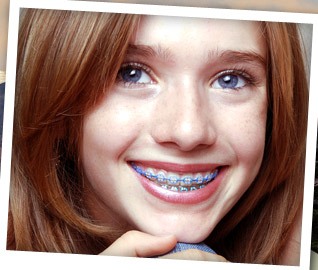Orthodontics-General
Orthodontics
Orthodontics, best known by its tools of the trade - braces - is a special discipline of dentistry concerned with aligning the teeth and jaws to improve your child's smile and oral health.
Braces today are smaller and less conspicuous - and a bit more sophisticated than the conventional gun-metal wire straps. While they still utilize wire straps, newer appliances are much more comfortable. In fact, traditional metal braces can be replaced by clear braces and braces from behind.
Braces generally come in three varieties:
- Brackets, usually made from stainless steel, are bonded to teeth.
- Bands are the traditional type that covers most of your teeth with
stainless steel strips that wrap around the teeth. - Clear retainer-
like appliances
In fact, in our clinic we stopped using the bonds completely because they cover most of the tooth, and instead we use a special tubes that only covers part of one surface rather than the four surfaces of the tooth.
Orthodontia is a multi-stage process. First, pretreatment records are made to make an accurate diagnosis. They include medical/dental history, clinical examination, plaster study models of teeth, photos of your face and teeth, and X-rays of your mouth and head. This information will be used to decide on the best treatment.
In most straight forward cases only some of these records are needed.
A custom treatment plan includes recommendations for a specific treatment appliance, such as braces or space maintainers, which are best suited to correct your child's orthodontic problem.
In our clinic we tend to use fixed retainers from the back of the teeth, this way less co-
During the "active treatment" phase, orthodontic appliances are in place. Appliances are adjusted periodically so that the teeth are moved correctly and efficiently. The time required for orthodontic treatment varies from person to person. Two phases of active treatment are sometimes needed for early orthodontic intervention. An important factor in how long your child wears braces is how well he or she cooperates during treatment.
During the post treatment, or "retention" phase, the child typically wears a retainer so that the teeth stay in their new positions.

Cosmetic issues

Today's braces are generally less noticeable than their predecessors. Brackets, the part of
the braces that hold the wires, are bonded to the front of the teeth. These brackets can be metal, clear, or tooth-colored. Wires that are used for braces today are also less noticeable. Today's wires are made of "space age" materials that exert a steady, gentle pressure on the teeth, making the tooth-moving process faster and more comfortable for patients. In some cases, brackets may be put on the back of the teeth.
Patients typically wear braces for about 24 months, although this varies based on the severity of the problem, the health of the teeth, gums and supporting bone and how closely the patient follows instructions. Usually, adult treatment takes a little longer.

Comfort Issues
During the treatment phase of orthodontia, it is necessary to periodically re-tighten the interconnecting wires. This causes mild pressure on the brackets or bands to shift teeth or jaws gradually into a desired position. Your child's teeth and jaws may feel slightly sore after such a visit, but the discomfort is short-lived.

Hygiene Issues
If your child wears braces, avoid some kinds of foods, such as sweets, chips and pop. Sugary and starchy foods generate acids and plaque that can cause tooth decay and promote gum disease. Cut healthy hard foods like carrots or apples into smaller pieces. And by all means, avoid sticky chewy sweets, such as caramel, which can cause wire damage and loosen brackets. Avoid hard and crunchy snacks such as popcorn, nuts, and hard candy, because these can break braces.
Oral hygiene is extremely important during the treatment phase of orthodontia. Insufficient cleaning while wearing braces can cause enamel staining around brackets or bands. Braces have tiny spaces where food particles and plaque get trapped. Brush carefully after every meal with fluoride toothpaste and a soft-bristled toothbrush. Rinse thoroughly and check your teeth in the mirror to make sure they're clean. Floss between braces and under wires with the help of a floss threader. Have your teeth cleaned every six months to keep your gums and teeth healthy.

Space Maintainers

Space maintainers can be very important to your child's long-term oral health. If your child loses a baby tooth early through guidance eruption, decay or injury, his or her other teeth could shift and begin to fill the vacant space. When your child's permanent teeth emerge, there's not enough room for them. The result is crooked or crowded teeth and difficulties with chewing or speaking.
Space maintainers are used to hold the spot left by the lost tooth until the permanent tooth emerges. The space maintainer might be a band or a temporary crown attached to one side of the vacant space. Later, as the permanent tooth emerges, the device is removed.






